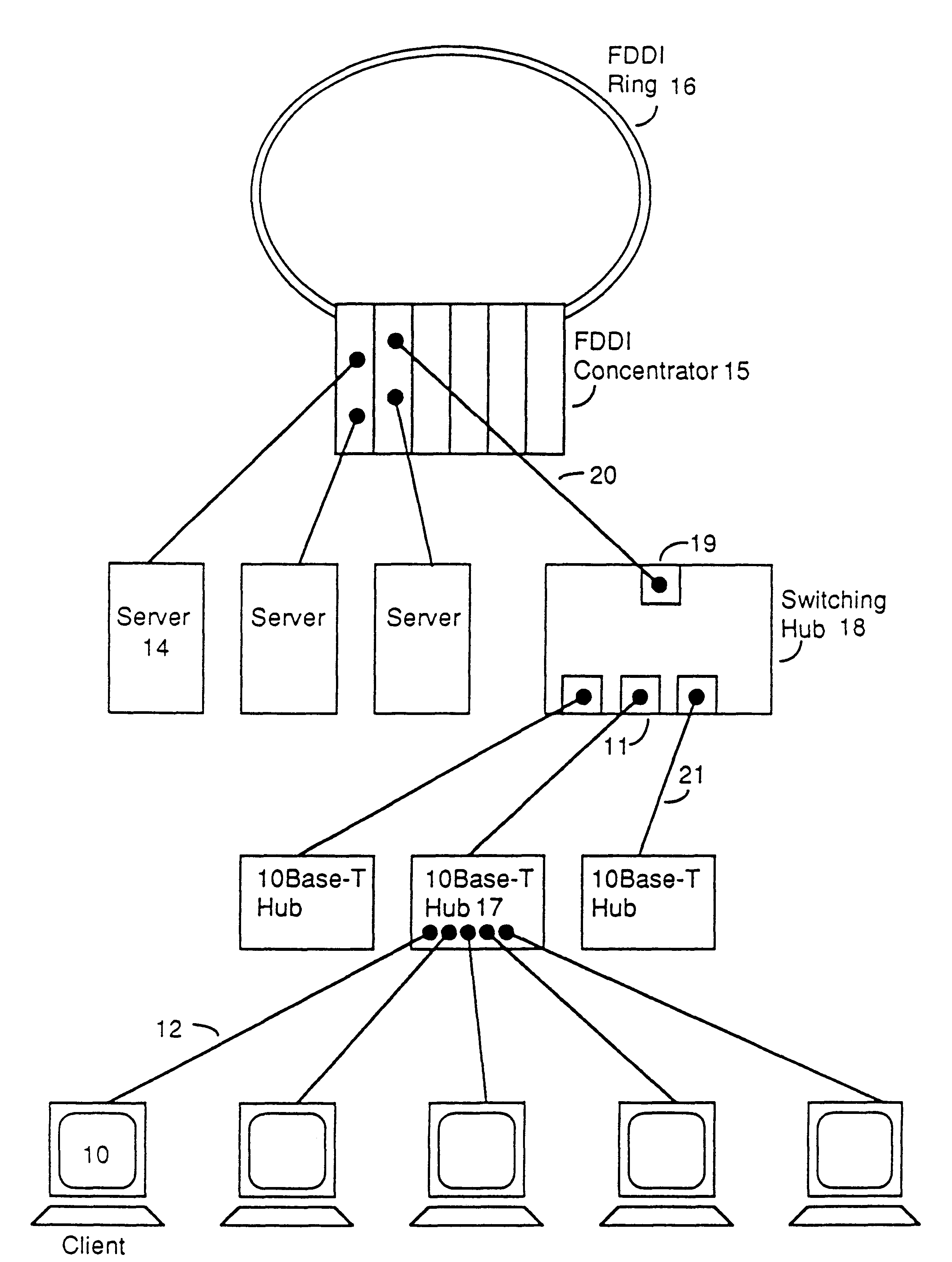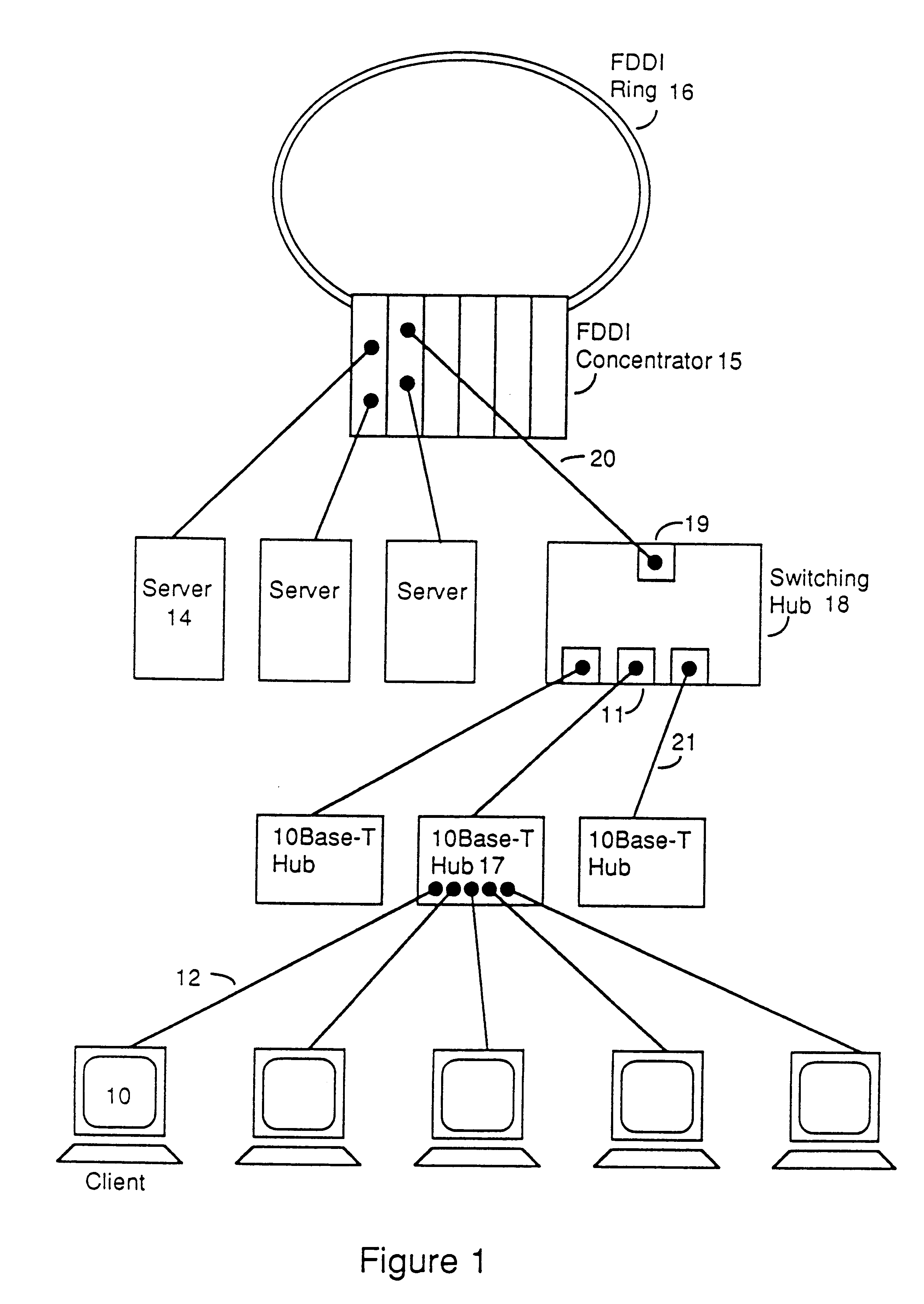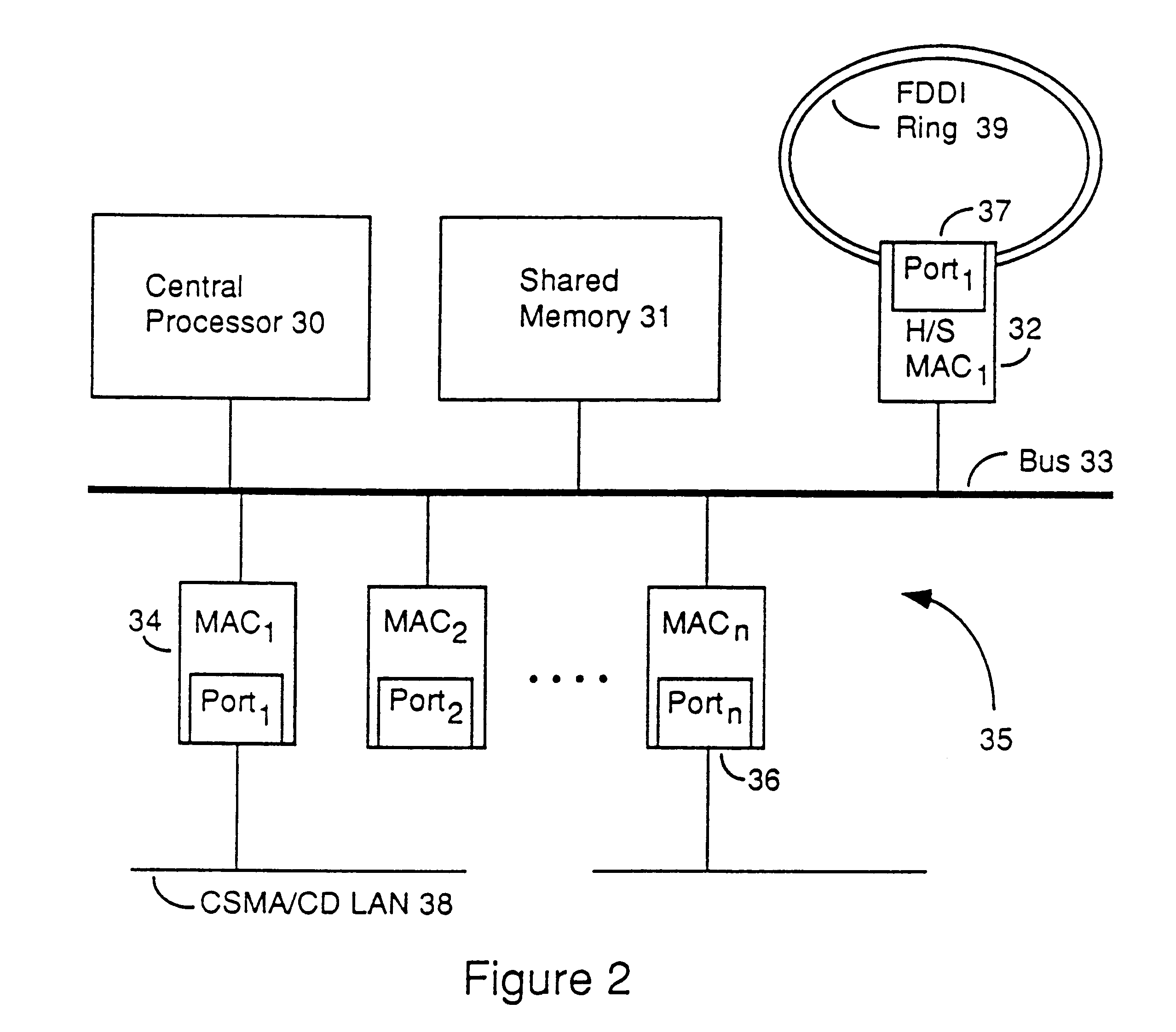Distributed memory switching hub
a memory switching and hub technology, applied in the field of local area network (lan) hubs, can solve the problem of limited maximum number of low-speed lan ports, and achieve the effects of increasing the speed at which frames of data are translated, quick flushing of frames, and high frame forwarding ra
- Summary
- Abstract
- Description
- Claims
- Application Information
AI Technical Summary
Benefits of technology
Problems solved by technology
Method used
Image
Examples
Embodiment Construction
A. Nomenclature and Conventions
1. A Data "Frame"
An embodiment of the distributed memory switching hub disclosed herein is a MAC layer device, that is, it operates at the MAC sublayer of the data link layer of the International Standards Organization (ISO) Open Systems Interconnection (OSI) seven layer abstract reference model. The reference model is comprised of the physical, data link, network, transport, session, presentation, and application layers. The data link layer is tasked with maintaining a reliable communication link between neighboring end stations and providing a reliable delivery mechanism to transmit data between the end stations. In order to provide a reliable delivery mechanism, the data link layer encapsulates or "frames" the data to be transmitted with source and destination media access control (MAC) addresses and error control information in the form of a frame check sequence (FCS) trailer. The FCS is a 32-bit cyclical redundancy check (CRC) based upon the entir...
PUM
 Login to View More
Login to View More Abstract
Description
Claims
Application Information
 Login to View More
Login to View More - R&D
- Intellectual Property
- Life Sciences
- Materials
- Tech Scout
- Unparalleled Data Quality
- Higher Quality Content
- 60% Fewer Hallucinations
Browse by: Latest US Patents, China's latest patents, Technical Efficacy Thesaurus, Application Domain, Technology Topic, Popular Technical Reports.
© 2025 PatSnap. All rights reserved.Legal|Privacy policy|Modern Slavery Act Transparency Statement|Sitemap|About US| Contact US: help@patsnap.com



